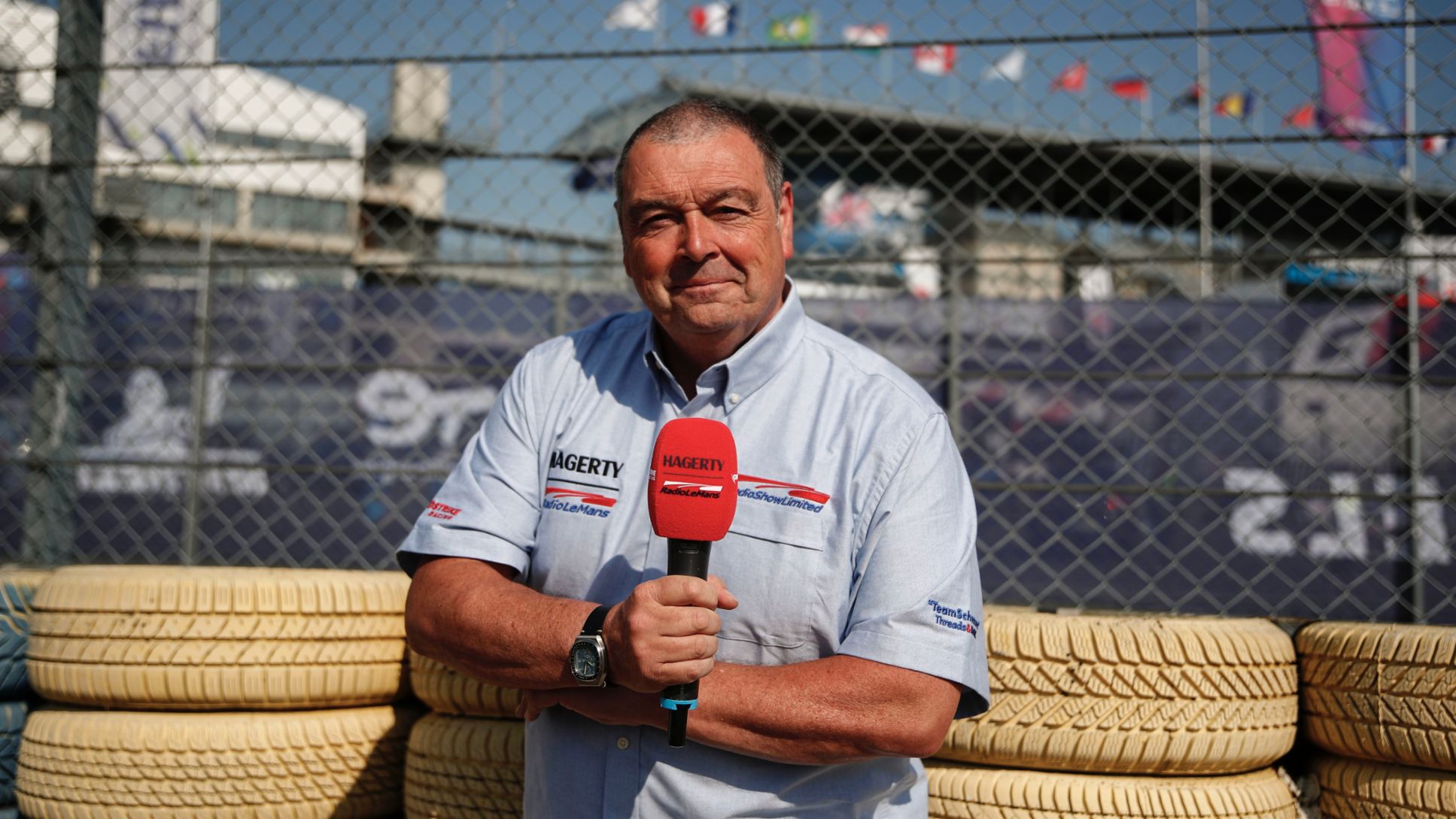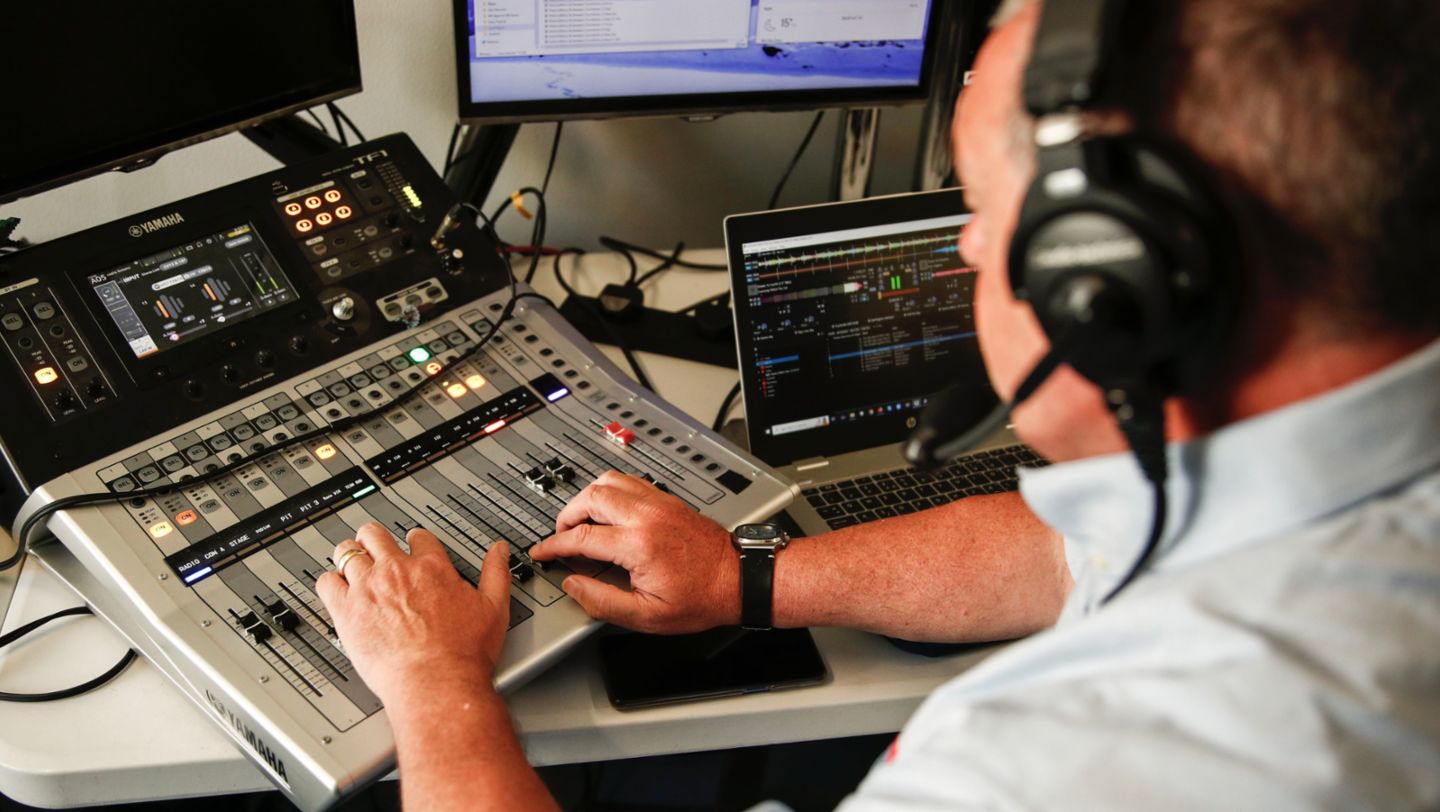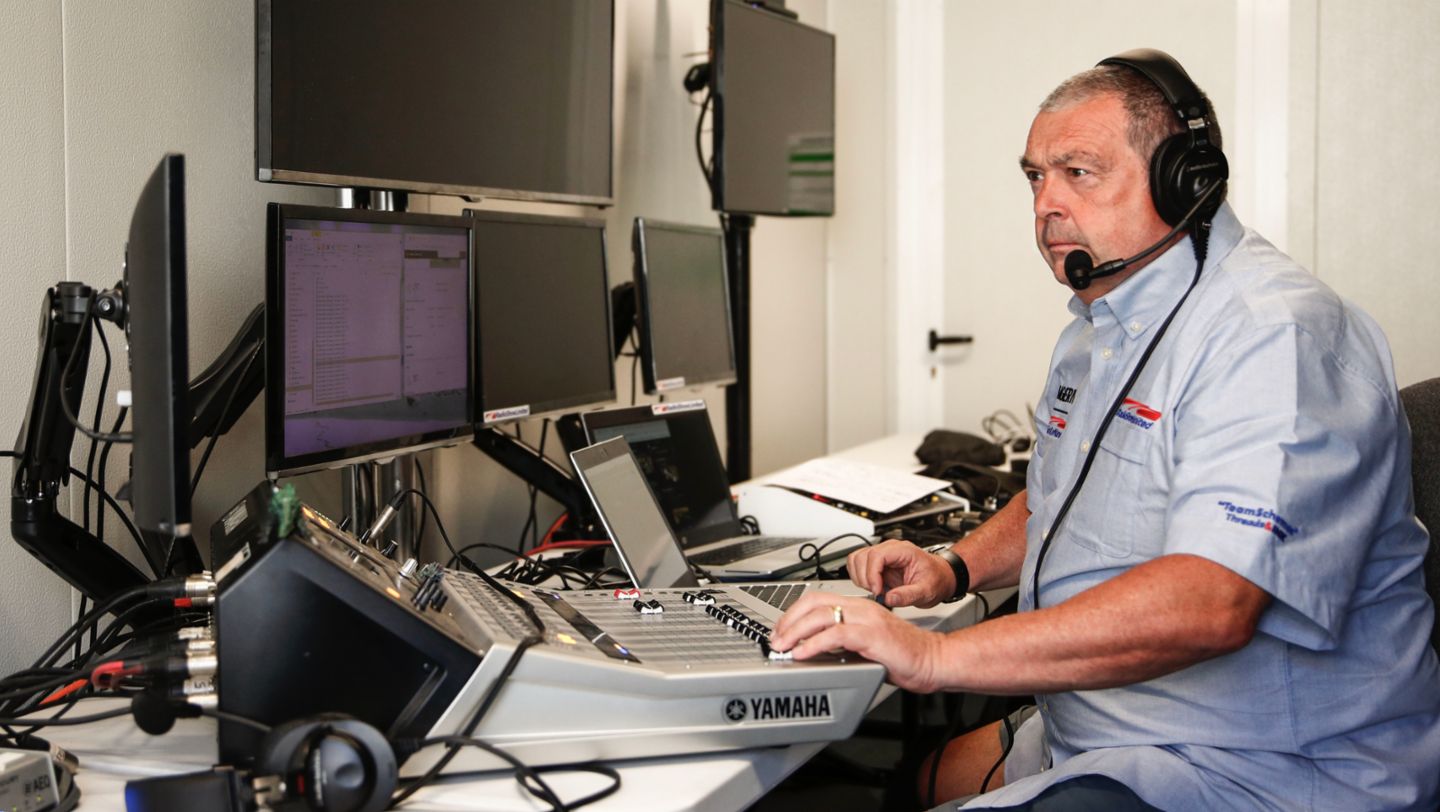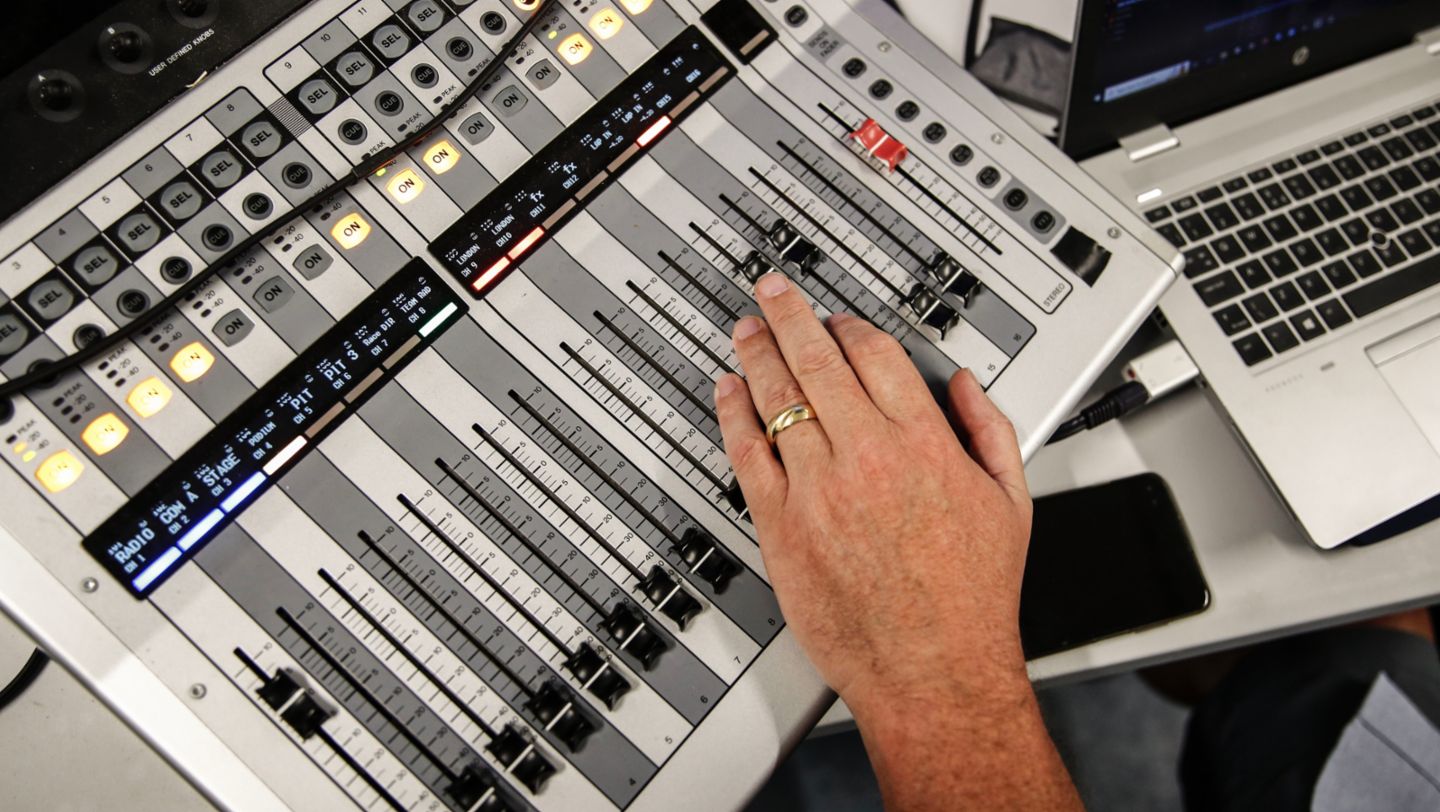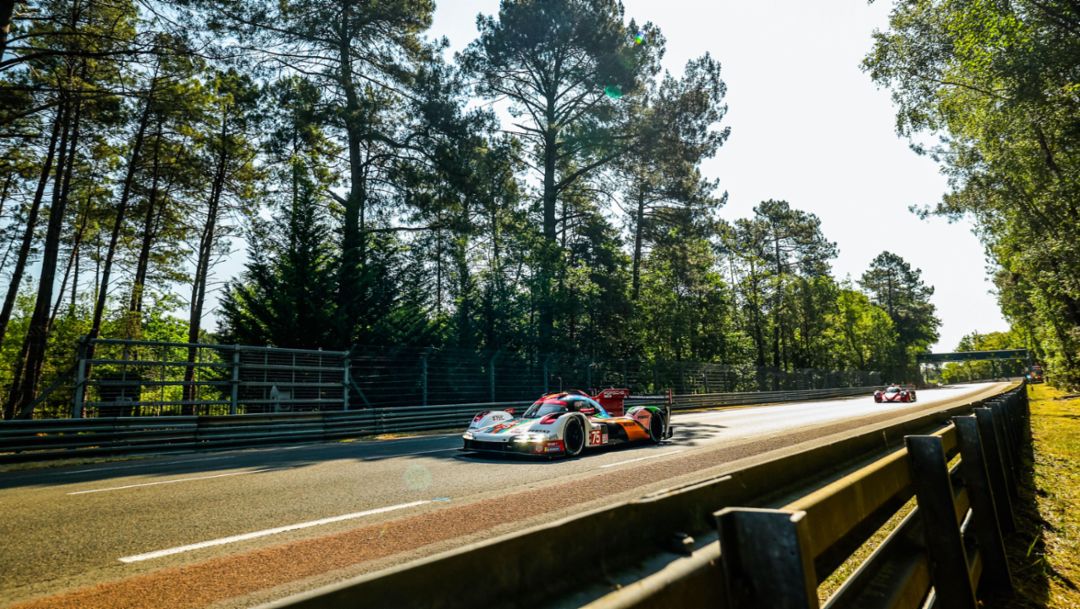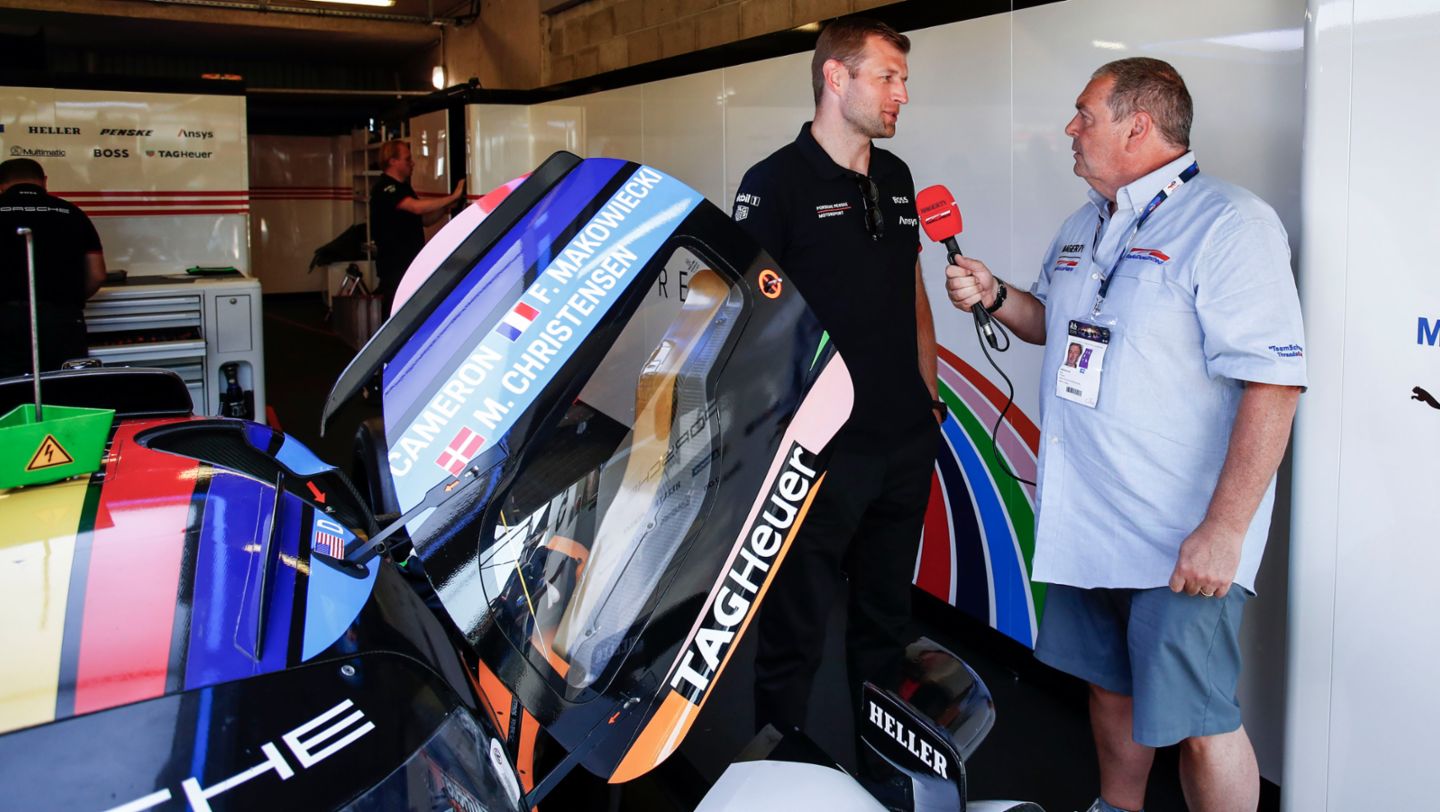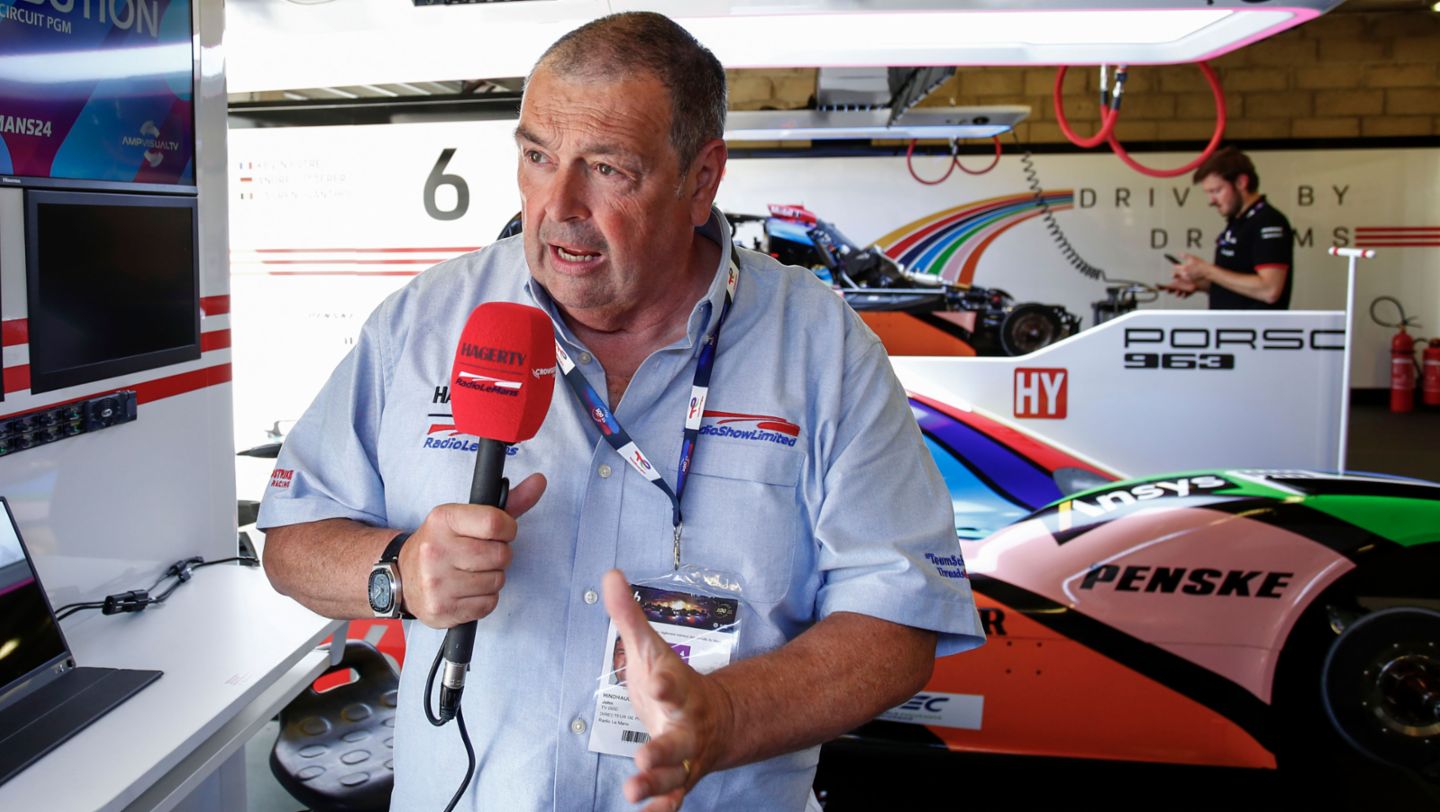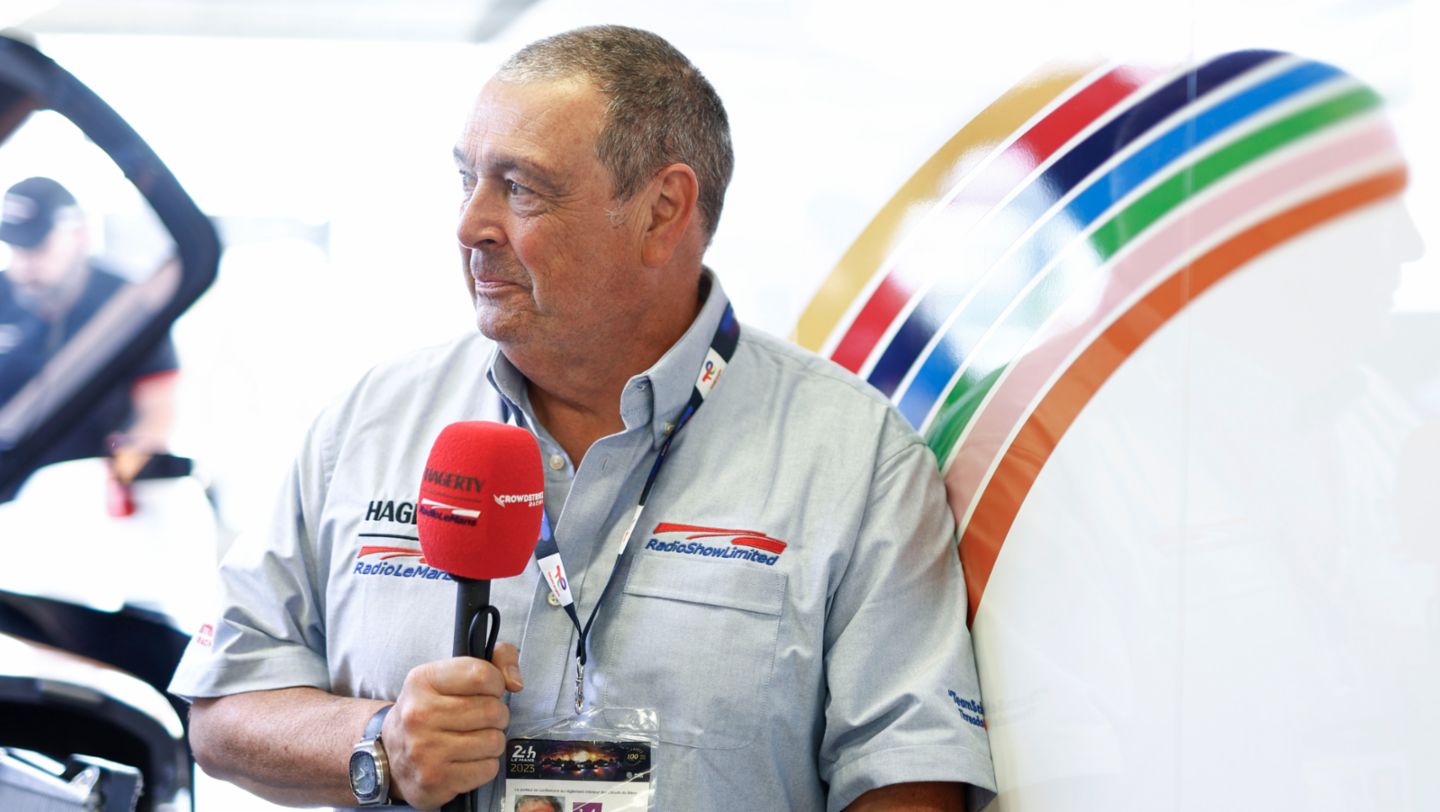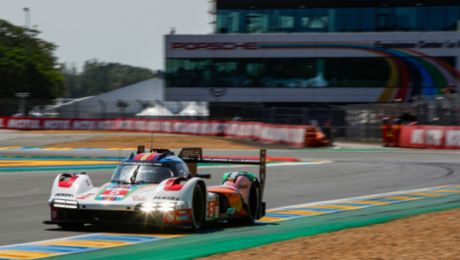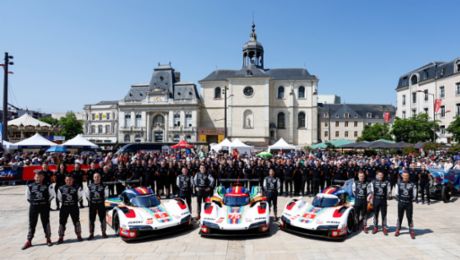Above the never-ending noise of the 24 Hours of Le Mans – above the blare of more than 60 cars through day and night, above the roars from the grandstands and the well-oiled cheers from the campsites – one man’s voice stands out. At this year’s race, along with a team of co-commentators, pitlane reporters and special guests, John Hindhaugh will once again describe the race to the world. Raised in Sunderland in north-east England, his accent is loveable, lyrical and – at times – supercharged. Just the ticket for the ups and downs of an around-the-clock race like Le Mans.
For many of the 250,000 fans at the circuit, including the assembled media, race teams plus millions more listening around the planet, Hindhaugh and his Radio Le Mans team are the voice of the race, broadcasting live and uninterrupted, online and over the airwaves.

Beyond Le Mans, they provide live coverage of sports car races all over the world, from Bathurst to Daytona to the Nürburgring, and every round of America’s IMSA Championship. In the racing world, Hindhaugh and his crew are radio royalty, and – like the races they call – their story is one of endurance, perseverance and a little luck. How did it all happen? On the eve of the 24-hour race’s 100th anniversary, as he prepares to drive a Porsche Cayenne from his home near Silverstone to La Sarthe, Hindhaugh explains.
Radio royalty
“It all started in the late 1980s with a chap called Harry Turner, the father of Radio Le Mans,” says Hindhaugh. “At first it was pretty basic – nobody was a pro broadcaster. My first race was in 1989. I drove down with Harry in a Dodge Day Van towing a caravan – we built the studio in that, and I slept on the floor. I took a bunch of seven-inch vinyls and LPs – in previous years they played music to fill the gaps. But that year we just kept going. I cued up Thin Lizzy before the start, but at the end of the race it was still on the turntable.”
Hindhaugh was asked back and quickly became a permanent fixture – adding new items like pit reports and other features, including his infamous ‘Mad Friday’ tours of the campsites, as arriving fans got into the spirit of the event. “Some of those reports involved things we probably can’t talk about…” he says. “And things we would rather not have seen. Thank God it was radio!”
1997: the internet to the rescue
Things continued like this through the 1990s, with the team broadcasting locally to the 100,000 English-speaking fans at the track. But with costs increasing – including substantial fees to race organisers the ACO (Automobile Club de l’Ouest) and the French radio authority – they needed a bigger audience to impress advertisers. So, in 1997 they turned to the internet.
“Back then the internet was very much in its infancy, none of us were computer literate, and we had to find this thing called server space,” says Hindhaugh. But his contacts in the City of London came up with an idea. “There wasn’t really 24-hour trading back then,” he says. “And there was a considerable amount of server capacity going spare over the weekend. So we did a deal to, erm, ‘borrow’ some space. We then rented an ISDN line from France Telecom to get the signal back to London where it could be digitised and dispersed online.”
This was all very expensive, but help was on hand. “Our friends at Porsche thought this was a great idea, so they put some money in,” continues Hindhaugh. “Therefore our first online broadcast to the world wouldn’t have happened without Porsche.” And it paid off – by the end of the race, around half a million people had tuned in. The following year the team flew to Road Atlanta to cover the Petit Le Mans race, and just one year after that, in 1999, they covered the entire American Le Mans Series season.
Today you’ll find Radio Le Mans streaming on smart speakers, satellite radio, mobiles, laptops and almost any online device via three dedicated channels. There are weekly podcasts, covering everything from Formula One to the Indy500 to the Porsche Carrera Cup. All completely free. “That’s the democracy of radio,” says Hindhaugh. “You put it out there and anyone can listen, whether it’s online or over the airwaves. Although internet radio isn’t something that you twiddle or scan through – you make a conscious decision to tune in.”
2006: Hindhaugh takes the reins – officially
Back in France, the Radio Le Mans story was about to take another twist. After the 2005 race, the station’s owner Haymarket Media couldn’t reach a new licence agreement with the ACO. A new backer was found, but when they pulled out at the last minute, Hindhaugh stepped in. “As it happened, I’d actually just sold my house. So I went to Paris just before Christmas and did a deal with the ACO”, he says. “The invoice came in a few days later, and by the end of January 2006 I’d handed over a large chunk of the proceeds from my house sale.”
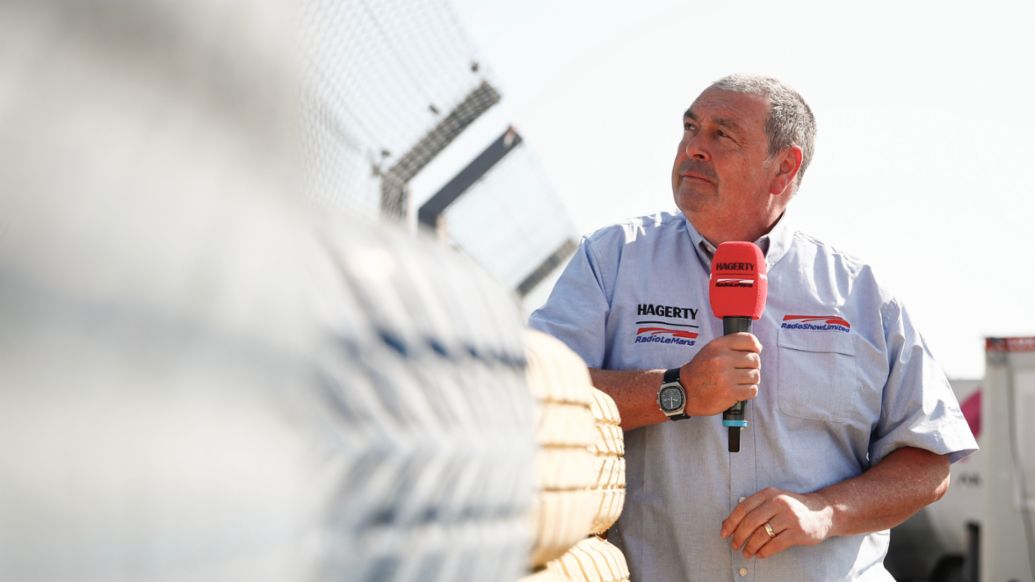
But Radio Le Mans was in his hands, along with his wife, Eve Hewitt. The two married just before the next Le Mans – followed by a reception near the circuit, hosted by the mayor of Arnage – and they’ve been the race’s official English-language service ever since. So how do they run the show?
“We take everything we need, from the sound desk to our own fibreoptics, even the furniture,” says Hindhaugh. “Nothing is supplied – not even a commentary box. We also put up our own transmitter above the tribune for the FM broadcast.” Then there’s the crew – a team of 15-20 people, including long-serving Paul Truswell, the analysist famed for barely moving from his mic for the full 24 hours, although these days even he works in stints, just like the drivers.
24 hours of chat
“There’s no off-peak time,” says Hindhaugh. “It might be the middle of the night for us, the old radio graveyard shift, but that could be primetime somewhere else in the world. So there can be no let-up in quality. It’s intense – full effects, full pit line coverage, full analysis and description of what’s going on. So we try to give people at least a couple of hours of rest – this year I’ll be heading for the front seat of the Cayenne.
We often liken the 24 hours of Le Mans to a book. But unlike a novel, you can’t skip to the end and see how it all turns out. And in the last laps, as we pull the strands of the story together, you can’t have been wide-awake for 24 hours – we want people to be fresh, ready for whatever drama unfolds.”
It's why, for so many fans, Radio Le Mans is the best way to follow the action. Of course, there’s live coverage on TV, but viewers often mute the audio and play Radio Le Mans over the pictures instead. At the track, a Radio Le Mans earpiece is essential.
Driving at 200 mph through an impressionist painting
“I love to be on air as the sun comes up on Sunday morning – when people are stirring in the grandstands,” says Hindhaugh. “There’s often a low mist that sits there over the track. My colleague Charles Dressing, an absolute wizard with words, once described the whole atmosphere of Le Mans as ‘lunatics driving at 200 miles an hour through an impressionist painting’ … and that just conjures up a perfect vision of that soft morning light and cars blurring past.
“You know, I’m incredibly fortunate to be a part of the world’s greatest motor race – to mingle with the fans, the teams and the drivers. I now get to call some of my idols my friends. I’m thankful to our listeners who are incredibly supportive, and to the ACO for allowing us to do it. We never take it for granted.”
And what about this year? Will we see a classic Le Mans battle on the race’s 100th birthday? “I’m delighted to see Porsche back in the top class,” concludes Hindhaugh. “And also delighted that they’ve got great competition from Ferrari and Cadillac and Toyota and Peugeot and everybody else.” Nobody knows how the drama will unfold. But wherever you are in the world, the chances are you’ll hear it first from Hindhaugh and his crew. So stay tuned.
To listen, visit www.radiolemans.co, search Radio Le Mans, or if you’re at the circuit tune into 91.2 FM.
